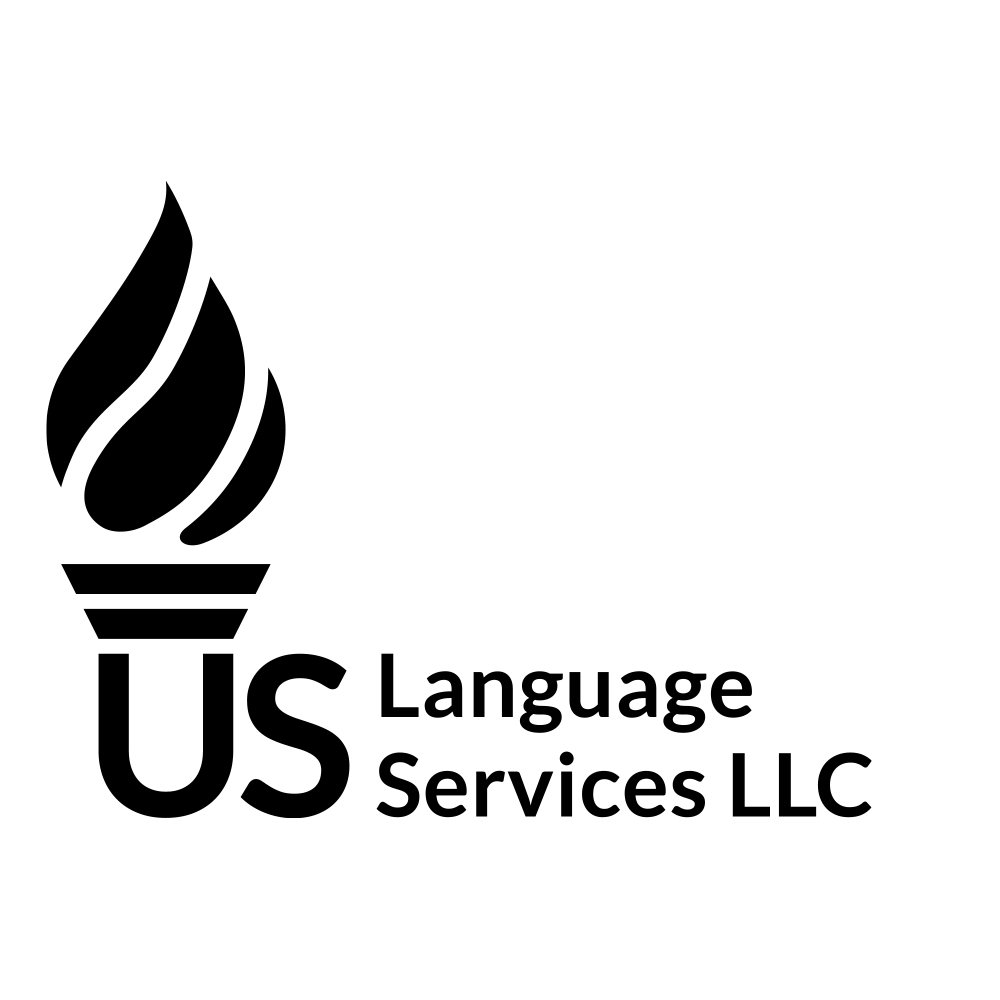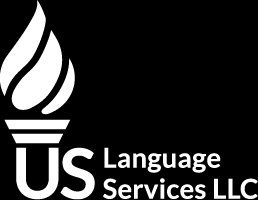How Can I Open a Bank Account in the U.S.
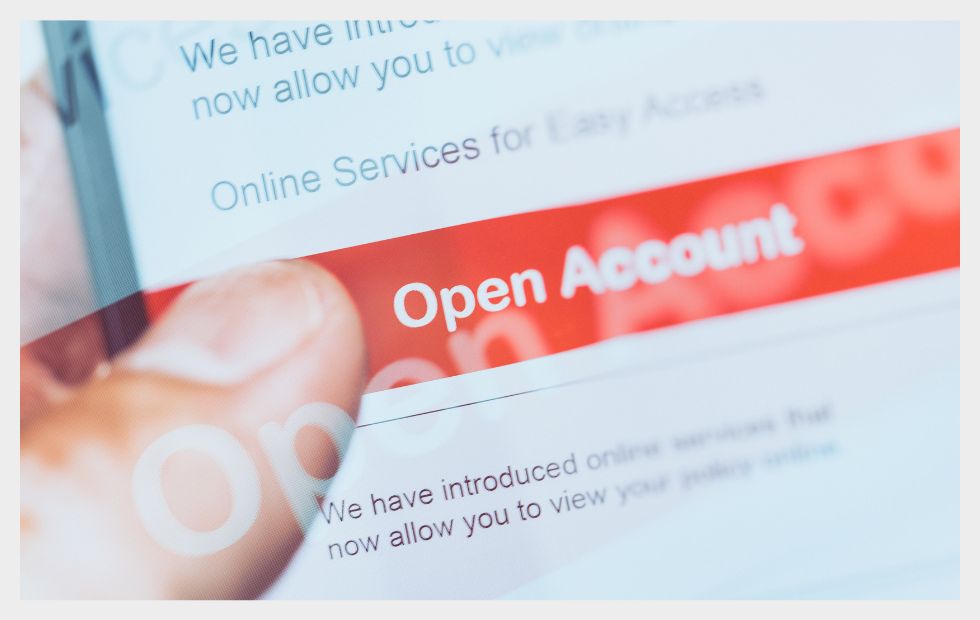
Opening a bank account in the U.S.
Having a bank account is a necessary part of life in the U.S. As you make money, you’ll be able to deposit, withdraw, pay bills, and even save money for future plans. Plus, you can earn interest on your money, and it’s the safest way to store your cash.
If you’re not a U.S. citizen, you might think you can’t open a bank account, but that’s not true at all. You usually can, as long as you can prove your identity and address with the proper paperwork. Still, opening a bank account can feel overwhelming at times because of all the different types of accounts, fees, rules, and documents.
To help you, we will take an in-depth look at the various accounts you can open and the differences between them. We will also outline the steps involved in opening a bank account and what to look for when choosing a bank.
In this guide, we will answer the following questions:
- How do I open a bank account?
- What is a savings account?
- What is a checking account?
- What is a joint bank account?
- What documents will I need to open a bank account?
- What is an Individual Taxpayer Identification Number?
- What if I don’t have standard forms of I.D. to open a bank account?
- Should my documents be translated into English?
How do I open a bank account?
Each bank is different, but they usually have similar requirements. Below, we will go through the general steps to open a bank account.
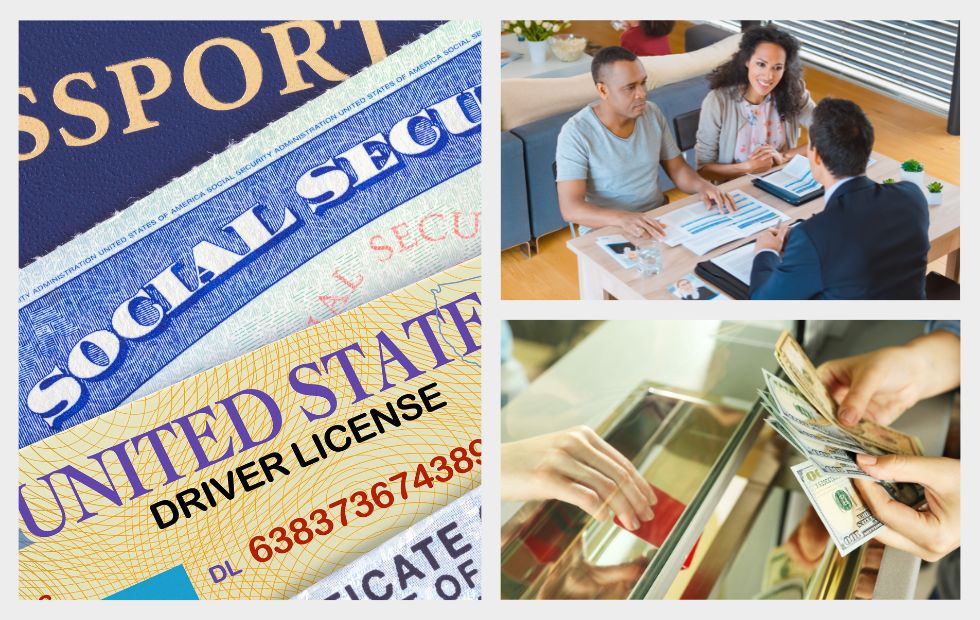
Opening a bank account requires valid identification, a discussion with a bank representative, and an initial deposit to activate your account.
-
Organize your documents
Before opening a bank account, collect all necessary documents, including proof of address, immigration paperwork, and other required documentation. Having these documents ready can expedite the application process. Later, we will list these documents in detail.
-
Choose the type of account
If you’re brand new to a bank, there are two main types of bank accounts: savings and checking. Savings accounts are designed to accumulate wealth, and checking accounts are meant for everyday spending. We will go over these in more detail later.
-
Choose a bank
Choosing a bank for your new account involves finding the right fit for your needs. To streamline this process, look for banks or credit unions familiar with the requirements of newcomers. When communicating with them, consider asking the following questions:
- What are the requirements for green card holders or non-residents to open an account?
- Does the account have monthly maintenance fees?
- Do you have any minimum balance requirements for this account?
- How extensive is your A.T.M. network, and what are the associated fees?
- Are there limits on the number of transactions allowed per month?
- Do you provide online banking and bill pay services, and is there a fee for these?
- What are the fees for wire transfers?
- What are the overdraft fees, and do you offer overdraft protection?
- Is a set of checks included with the account, and what is the cost for additional checks?
- What other financial services do you offer, such as investments, insurance, or safety deposit boxes?
- How are exchange rates determined for international money transfers?
- Are there any additional fees associated with this account that I should know about?
-
Open an account and make your first deposit
After selecting what type of account you want and confirming you meet the bank’s requirements, it’s time to actually open an account.
This can be done by going to a bank in person or sometimes online if the bank supports online applications. But if it’s your first account, visiting the bank in person may be easiest. You might want to schedule an appointment to ensure the bank will have time to see you.
Upon successfully opening the account, you’ll be required to make your first deposit. The minimum amount will probably range between $25 to $100. Depending on the bank’s policies, you can fund your account using:
- Cash
- Direct deposit from another account, utilizing your new routing number and account number
- A paper check. But, keep in mind that banks often place a hold on personal checks, requiring you to wait until the check clears before making withdrawals or transfers from your new account.
What is a savings account?
Savings accounts are designed to store money over longer periods of time, so they are not as accessible as checking accounts. You can’t write checks against them or use a debit card to withdraw money from savings accounts. Most savings accounts have a limit of around six free withdrawals or transfers per month.

A savings account helps you grow your money over time, making it a key tool for financial stability.
These accounts are ideal for long-term storage, allowing your money to accumulate interest. High-yield savings accounts, in particular, often offer higher annual percentage yields (APYs) than checking accounts, accelerating your wealth growth.
When choosing a savings account, consider these factors:
- APY: A higher APY means more interest earnings. Note that savings account APYs can vary, as banks can adjust them over time.
- Balance requirements: Some savings accounts require a minimum balance to earn the stated APY. Choose an account with a minimum balance you can reasonably manage.
- Fees: Seek accounts with no monthly maintenance fees or easy ways to waive the fees.
- Bonus: Explore banks offering cash bonuses as an incentive for opening a new savings account.
What is a checking account?
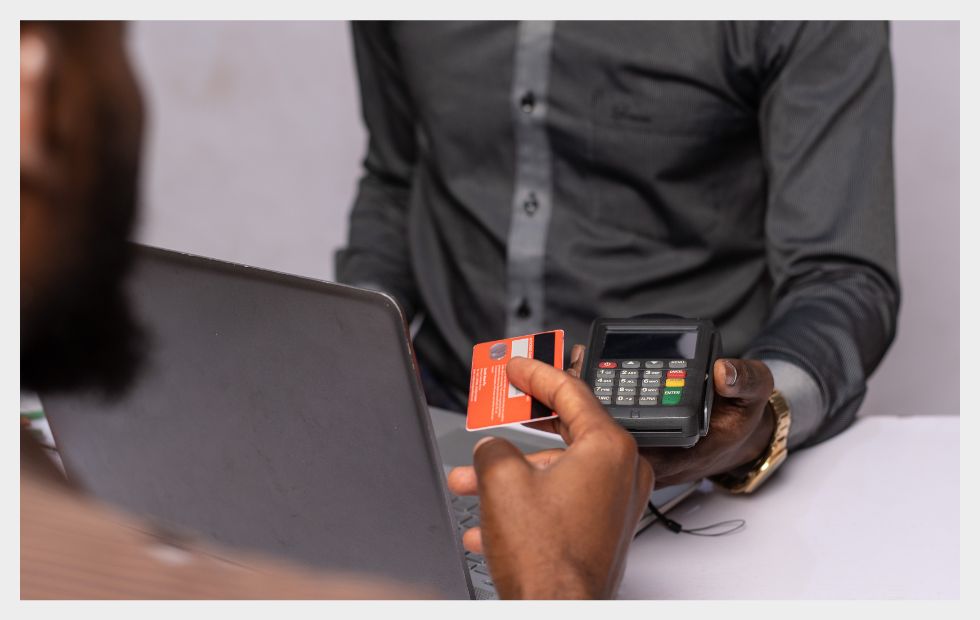
A checking account provides easy access to your money for everyday transactions and purchases.
Checking accounts are designed to give you easy access to everyday transactions, like money transfers, A.T.M. access, and writing checks. These accounts often come with convenient features like a debit card, checkbook, and mobile apps.
However, it’s important to note that checking accounts typically don’t earn interest on the funds you deposit. For optimal savings, consider keeping excess funds in a savings account that earns interest.
When choosing a checking account, focus on three key features:
- No monthly maintenance fees
- Free access to an extensive A.T.M. network
- Low or no overdraft fees
What is a joint bank account?
You may want to open a shared bank account with your spouse, child, or business partner, which is called a joint bank account.
A joint bank account is a shared account between two or more people, commonly used for purposes like paying bills, depositing paychecks, saving money, or managing family expenses.
Joint bank accounts operate similarly to individual accounts. In the case of joint checking accounts, they function like regular checking accounts, allowing account holders to write checks and use debit cards. Joint savings accounts operate similarly to traditional savings accounts, providing a secure place for funds and earning interest.

A joint bank account allows two or more people to manage shared finances and expenses together.
The key distinction lies in the shared control of the account. Both individuals who own the joint account have equal authority. Each account holder can utilize a debit card, write checks, and make purchases. Additionally, both parties have the ability to add or withdraw funds from the account.
Funds in a joint account are jointly owned by both individuals, and either person has the freedom to withdraw or spend the money, regardless of who initially deposited the funds. The bank does not differentiate between the contributions of each owner, making joint accounts effective for managing shared expenses. However, it’s essential to open a joint bank account only with someone you trust, as both individuals have equal control over the account’s funds.
Joint accounts can also be helpful to minors since many banks won’t allow a person below the age of 18 to open an independent account. With most banks, a minor will be able to open a joint account as long as there’s an adult co-owner. Then, that minor can still have access to debit cards and A.T.M.s, with the added assurance of adult supervision. However, minors usually do not have the same rights as adults in making changes to their accounts.
What documents will I need to open a bank account?
If you’re considering opening a U.S. bank account, you should keep in mind that banking regulations are different in each state.
Generally, there are two primary methods to initiate the process: visiting a physical branch to complete the steps in person or opting for online account opening.
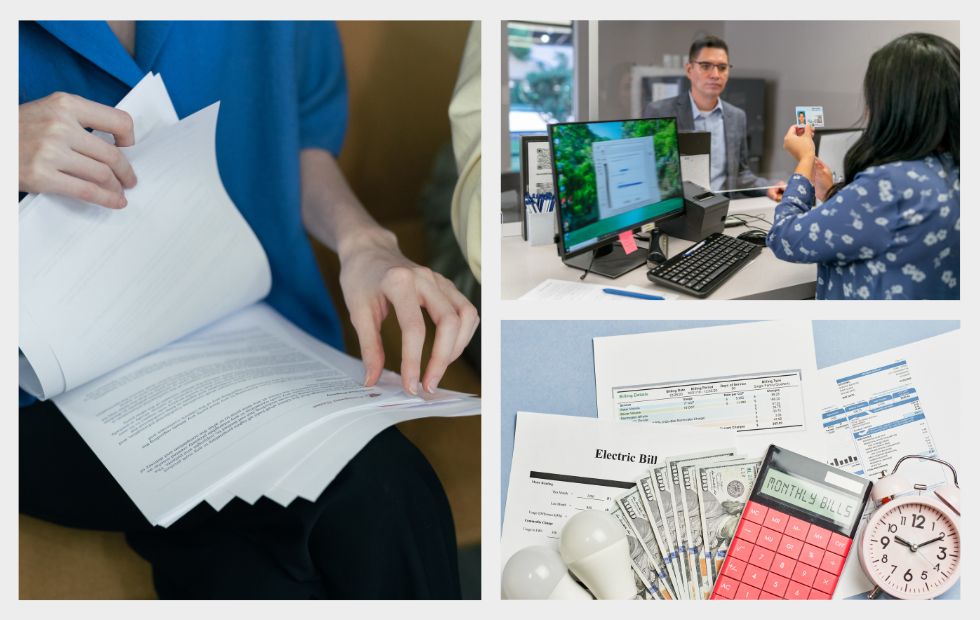
Having the proper documents ready can make opening a bank account faster and hassle-free.
For immigrants, resident status may influence the availability of online account openings. As a result, direct communication with a branch representative is a more viable option. Regardless, most banks and credit unions typically request the following documents.
-
Government-issued ID
A government-issued photo I.D. is usually a prerequisite for opening a bank account. Some acceptable options might be:
- Passport
- U.S. Green Card
- Driver’s license
- State-issued ID
- Employment Authorization Document (E.A.D.)
-
Social Security Number (SSN) and/or individual taxpayer identification number (ITIN)
Your unique identification number is crucial when providing personal details for both traditional and online banking. Depending on your residency status, you’ll be required to provide one of the following or both:
- Social Security Number: A nine-digit identifying number issued to U.S. citizens, certain permanent residents, and temporary residents. The easiest way to demonstrate your SSN is by bringing your Social Security Card.
- Individual Taxpayer Identification Number: A nine-digit identification for those ineligible for an SSN but with taxable income. The ITIN itself is not issued in card form, instead it is typically a letter or notice issued by the Internal Revenue Service confirming your ITIN. This letter serves as official documentation of your ITIN.
-
Proof of resident status
When opening a bank account, the bank will probably request verification of your residency status. To meet this requirement, you may need to provide any of the following documents:
- Permanent Resident Card (Green Card): A government-issued identification card for lawful permanent residents.
- Employment Authorization Document (E.A.D.): A card that grants individuals the legal right to work in the United States for a specific period.
- I-94 Arrival/Departure Record: A form issued to non-immigrants upon entry to the U.S., indicating their authorized period of stay.
- Visa Stamps: Stamps in a passport indicating the type and duration of a person’s allowed stay in the U.S.
-
Proof of address
Many banks require individuals to have a verifiable presence in the U.S., typically demonstrated by having a valid U.S. address. The acceptable forms of proof for a U.S. address can vary when opening either a checking or savings account. Depending on the bank, valid proof may include:
- Utility bills, magazines, or other mail with your name and U.S. address
- Apartment lease agreement
- Property deed with your name listed
- Driver’s license or state-issued I.D. displaying a U.S. address
If you haven’t secured a U.S. address yet, some banks offer international accounts that may be able to assist. Some of these accounts come with multi-currency benefits, allowing you to deposit and transact in multiple currencies.
What is an Individual Taxpayer Identification Number?
An Individual Taxpayer Identification Number (ITIN) is a unique nine-digit tax processing number assigned by the Internal Revenue Service (I.R.S.) to individuals who are required to have a U.S. taxpayer identification number but are not eligible to obtain a Social Security Number (SSN).
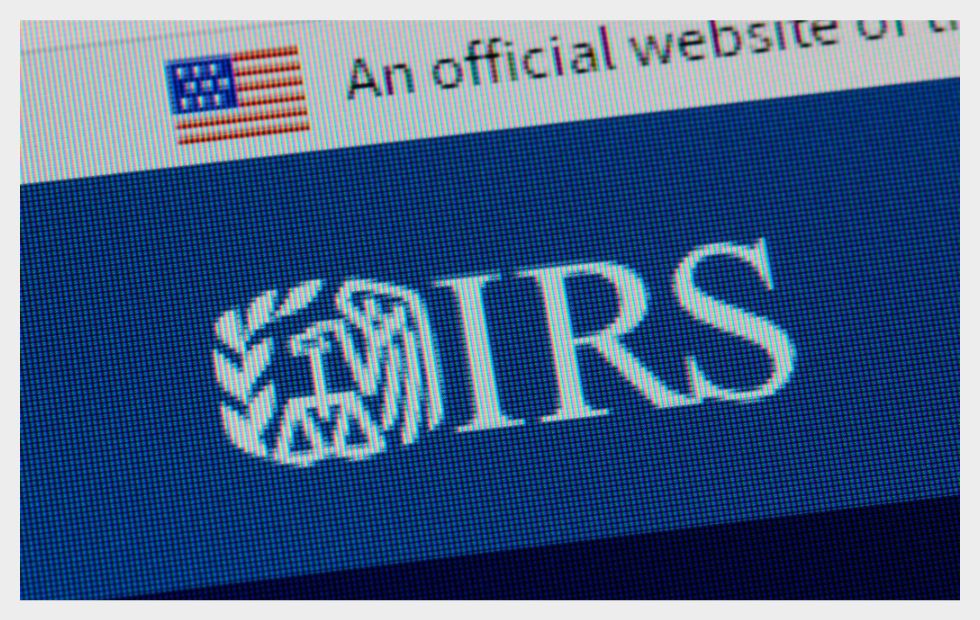
Internal Revenue Service (I.R.S.)
ITINs are primarily used for federal tax reporting purposes and to comply with U.S. tax laws.
Individuals who may need an ITIN include non-U.S. residents, foreign nationals, and their dependents who are not eligible for an SSN but have U.S. tax obligations. Examples of situations where an ITIN might be required include filing a U.S. tax return, opening a bank account, or securing a mortgage.
To obtain an ITIN, individuals typically need to submit an application to the I.R.S., along with supporting documentation to verify their identity and foreign status. The I.R.S. issues ITINs regardless of immigration status, as their purpose is strictly for tax-related purposes.
What if I don’t have standard forms of I.D. to open a bank account?
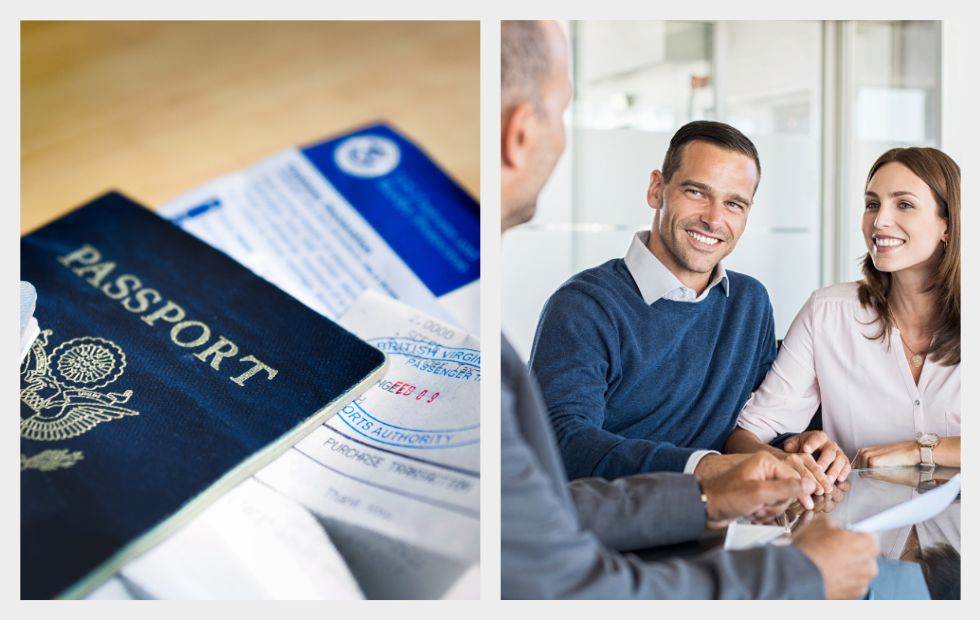
Many banks accept alternative forms of identification—speak with a representative to explore your options.
Some people may not have all the normal forms of identification. This might be the case if you’re a new immigrant, international student, refugee, or asylum seeker.
If possible, it’s also helpful to bring a reference, such as a family member or friend who is already a member of the bank where you hope to open an account.
If you don’t have the forms of I.D. listed above, the best thing to do is visit the bank in person with as much documentation as possible to identify yourself.
Here are some other forms of documentation you might need:
- Birth certificate
- Marriage certificate
- Valid passport from your home country
- A bank reference letter from another bank
- Military service records
- Utility bills (water, electricity, internet, etc.)
- Rental agreements
- Student ID
- Refugee travel document
- Asylum approval document
- Border crossing card, Form DSP-150
- Fiancé Visa, Form I-129F
Basically, any document to prove your identity can be helpful. While it may seem overwhelming to bring multiple documents, it’s better to have documents you don’t need.
Should my documents be translated into English?
Each bank has different requirements regarding the documents they will accept when opening a bank account.

Translating your documents into English can help banks verify your identity and speed up the account opening process.
While there are no official rules regarding whether your documents should be translated into English, certified translations could help banks verify your identity. This is especially true if you’re presenting a birth certificate or marriage certificate from another country.
Some documents that the bank might use to verify your identity include:
- Birth certificates
- Military service records
- Marriage certificates
- Divorce decrees
- Death certificate
- Reference letters from foreign banks
You can order a certified translation of these documents from our online store:
Order Your Certified Translation
Conclusion
Opening a bank account in the United States is a crucial step towards financial stability and convenience. While the process may seem daunting to non-U.S. citizens and immigrants, it is entirely achievable with the right documentation and information.
Now that we’ve looked at each step involved in opening a new bank account, our next discussion will examine the potential fees associated with bank accounts. Sometimes services like savings and checking accounts or A.T.M.s can charge fees. If you’re not careful these fees may come as a surprise. It’s best to educate yourself in advance so you understand the fees and policies associated with opening a bank account.
U.S. Language Services is not a law firm; its content should not be taken as legal advice. For specific legal concerns, please consult a licensed attorney. Similarly, financial information on our site is for informational purposes only, not financial advice. Consult a certified financial advisor or tax professional for advice tailored to your situation.
By accessing U.S. Language Services, you acknowledge that it does not provide legal or financial advice. You agree not to rely on its content as such. U.S. Language Services and its contributors bear no liability for any inaccuracies, losses, or damages resulting from the use of information on our site.
Guaranteed Acceptance
All our certified to English translations are accepted by the USCIS. Our translations follow the guidelines established by the USCIS and are also accepted by educational institutions.
Most Requested Documents
FAQs
You can order most translations 24 hours a day, 7 days a week through our online store. For large projects (more than 20,000 words or 50 pages), please request a quote.

